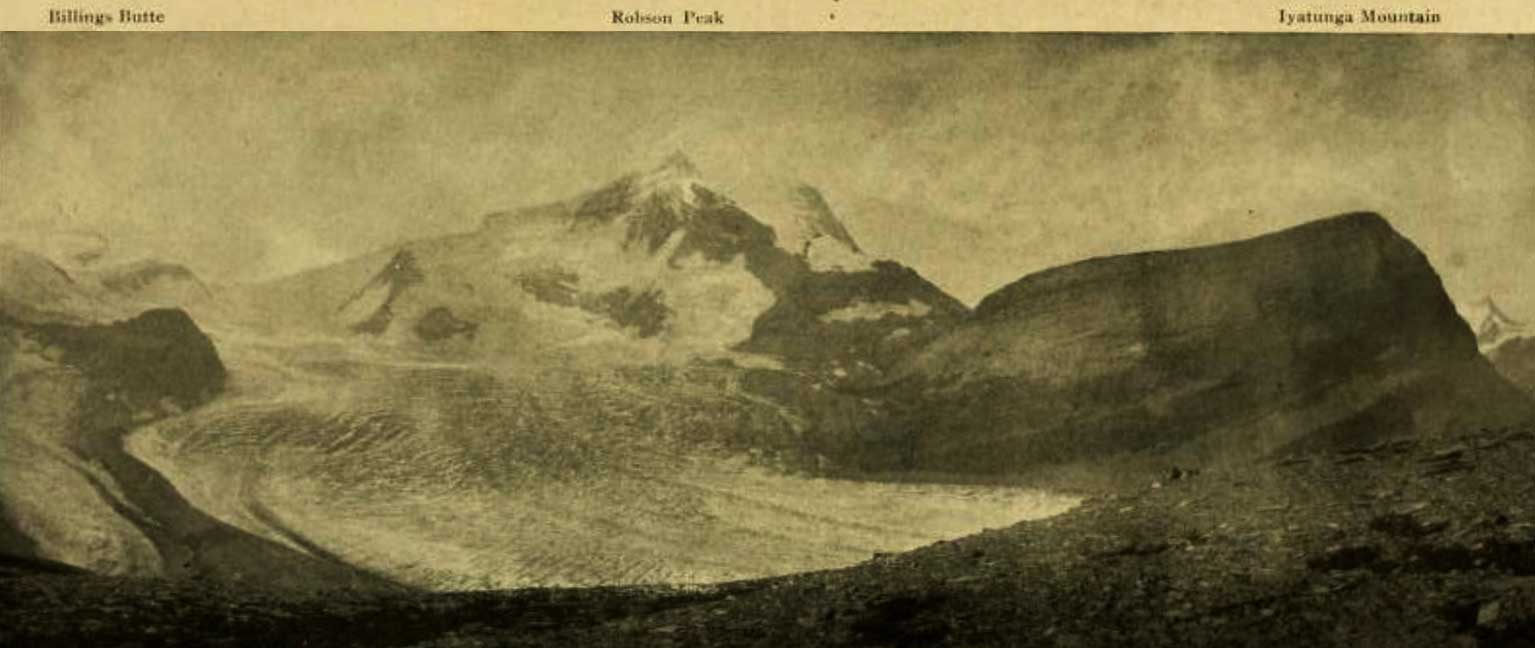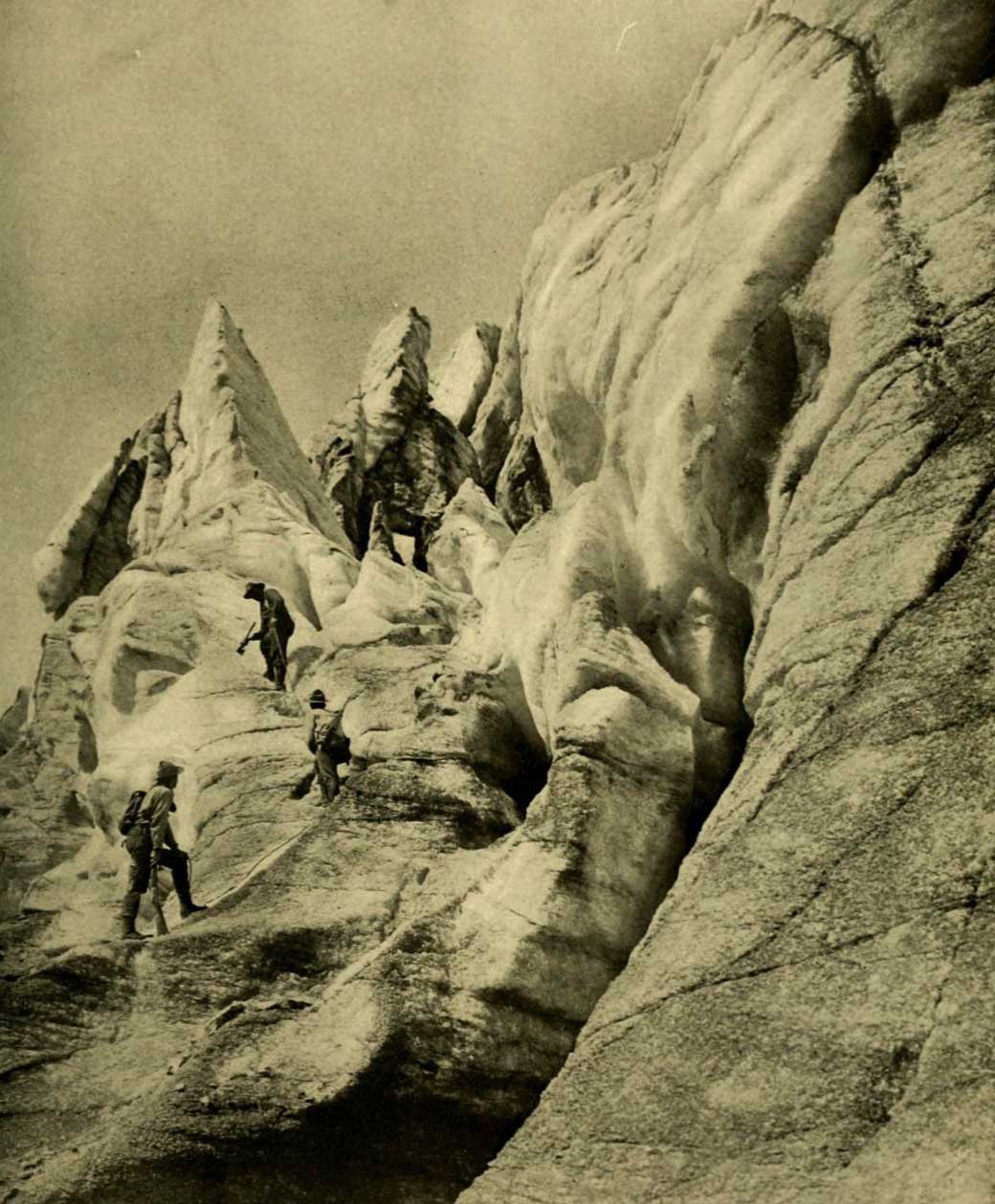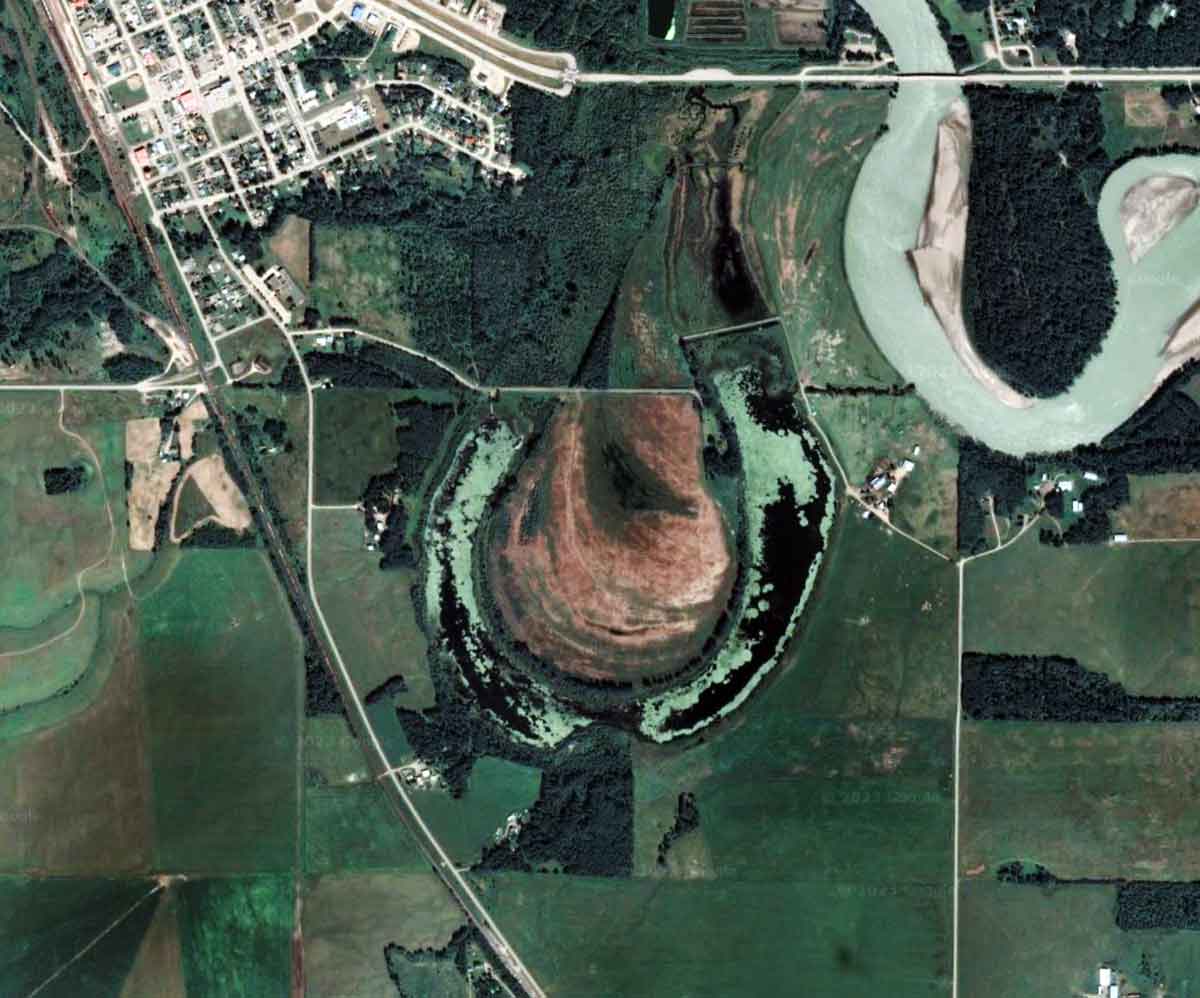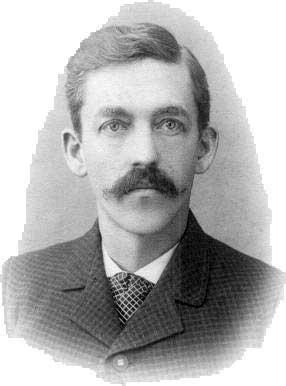Former name of Robson Glacier
Earliest known reference to this name is 1913 (Walcott)
Not currently an official name.

Billings Butte – Robson Peak – Iyatunga Mountain. Panonamic view of the Robson massif and adjoining mountains, with the great Hunga glacier in the foreground.
Photo: Charles D. Walcott, 1912
National Geographic Magazine 1913

Working up through the vast and broken front of Hunga Glacier. Photo: R. C. W. Lett, 1911
National Geographic Magazine 1913
“Hunga” presumably a word in an Indigenous language.
- Walcott, Charles Doolittle [1850–1927]. “The monarch of the Canadian Rockies.” National Geographic Magazine, (1913):626. Internet Archive

